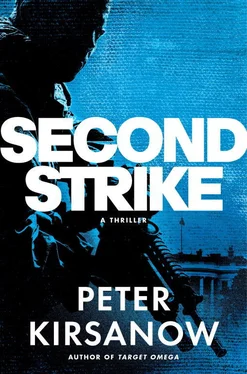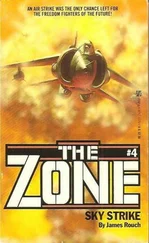But Ruth wasn’t done. She had continued to make call after call to confirm Amos’s personal effects, to determine whether anything was missing or stolen. And where was their car? That was a really nice LaCrosse. All kinds of features. The grandbaby’s car seat was found in the woods near Amos. Why would they do that? There must have been more than one of them. More than two. They must’ve needed the back seat, said Ruth.
Pretty soon, Bob Lampley and some of Ruth’s friends and neighbors were calling around also. What do you know? What do you hear? And the people on the other end of those calls reached out to their friends, neighbors, and contacts. Decades of friendships and bonds were put to use to get answers. Ruth and Amos deserved it.
Ruth persisted. Between calls she received condolences and served coffee and pie. She smiled and sometimes even chuckled at anecdotes about Amos’s habits and foibles.
But she persisted. And in short order the dominoes falling from all of the calls that came out of the Ponder house produced results. According to Amy Randall from the church choir, whose sister was an insurance adjuster in Kannapolis, North Carolina, police in Albemarle had found a LaCrosse next to an Econoline behind a truck stop along Route 52. No damage. It still had plenty of gas. A patron in the diner adjacent to the truck stop saw about a dozen men get out of the LaCrosse and the van. Most of them were foreign-looking, but then it seemed just about everyone was foreign-looking these days.
But one of the guys stood out. The patron hadn’t provided a very good description other than to say the guy—even from fifty yards away—gave the patron chills. Couldn’t put his finger on it. Maybe it was the way the guy walked or how he appeared to interact with the others. But the patron was glad when the guy drove off in a minivan instead of coming into the diner.
The Albemarle police were reviewing the video from the security cameras atop the fuel islands at the truck stop. Because of the distance between the islands and the lot where the LaCrosse was parked, the video was blurry, and the angles were poor. But the FBI was coming down and they would run the feed through their equipment to clarify and enhance it.
Ruth wasn’t done. She had found Amos. She had found the car. But she wanted the man who had killed her husband. And she knew in her bones it was the guy who had given the diner patron chills.
Ruth didn’t know anything about forensics. But she knew one thing for sure. The man who had killed Amos headed north with all those foreign-looking men, probably to a big city where they could blend in. Probably, Ruth thought, to Washington, where it seemed there were hardly any Americans left, including those born here.
So Ruth would persist. So would more than a dozen of her friends and family. Because that’s what friends and family did. You couldn’t depend on the government. You certainly couldn’t wait on them. They had one million other things going on that seemed to have absolutely nothing to do with anything important—or even remotely relevant—to you, your family, or your friends. So Ruth and a small army surrounding her would make pests of themselves until that scary man in the video was found. He had destroyed the best thing in Ruth’s life and deprived Catoosa County of one of its best, and she was determined to make him pay.
QUANTICO, VIRGINIA,
AUGUST 16, 7:37 A.M. EDT
Five hundred sixty miles to the north, another group of individuals with their own network also was searching for the scary man in the video.
Shortly after Dan Dwyer had sensed the massacre in Georgia might be the work of Taras Bor, he had directed a team of DGT investigators to monitor the developments on the news and make inquiries with local law enforcement. Professional acquaintances and former colleagues were queried, extending even to a few people located at Pope Field at Fort Bragg.
Random bits of information were gleaned and analyzed. Pins were placed on points on a map. The team discussed the various scenarios and probabilities among themselves.
And they had come to the same conclusion as Ruth Ponder, although nearly an hour later. The scary man in the video taken by cameras stationed on the fuel islands of the truck stop was likely the perpetrator of the massacre in northern Georgia. But by virtue of their boss’s previous experience with the likely perpetrator, the team had something Ruth did not: a name. Taras Bor.
The DGT team also had powerful computers and a platoon of extremely skilled experts to operate them and analyze their output. Even before the FBI got its hands on the video, it had been streamed to DGT’s cybersecurity division just outside Quantico, Virginia, where it had been blown up and enhanced, its resolution sharpened. Hundreds of media reports were collated, sifted, and entered into various programs for analysis, including a report of a peculiar farmhouse explosion in rural western South Carolina and a report of shots fired near the North Carolina border.
For the most part, the adage “garbage in, garbage out” prevailed. But with the help of innovative computer programs and decades of investigative experience, the DGT team came to a conclusion similar to Ruth’s: Taras Bor was headed to Washington, D.C. More ominous, their analysis showed that Bor had already arrived in the District.
As soon as the team arrived at their preliminary conclusions, the lead analyst called Dwyer, who transferred the call to the secure communications room. Dwyer sat in the captain’s chair and put the call on speaker.
“What do you have?”
“Sir, it appears Taras Bor may be in Washington, D.C., right now.”
“Crap.”
“We have a very poor-quality video from a truck stop near Albemarle. We enhanced it, ran it through facial recognition, but the results are inconclusive. Could be Bor; might not be. But considering all of the ancillary facts—especially the style of execution—our operating premise is that it’s Bor.”
“What’s the probability on facial recognition?”
“Between fifty-five and sixty percent. Usually we don’t score it as a hit unless we get eighty percent or more.”
“Can you pull the image up right now?” Dwyer asked.
“I’m looking at a magnification of a still on the big screen as we speak, sir.”
“Can you see a J-shaped scar along the right jawline ending at the earlobe?”
“Not really, sir. The most we can see is a light shadow. Beyond a certain point, enhancement gets counterproductive. It just dissolves into spots and splotches. It could be a scar. Could just as well be the lighting.”
“Understood. What feeds your operating premise besides the style of execution?”
“Well, it seems a reach, unless you at least consider that it may be Bor,” the lead replied. “But we inputted every police, fire, and EMS report in a two-hundred-mile radius of the massacre site from the time of execution to just a short time ago. The program spit back almost everything except an explosion and fire in rural western South Carolina. The program snagged that report because a preliminary arson investigator’s assessment indicates the presence of accelerants. Plural. Magnesium, smokeless powder, possibly penta.”
“Right. Everyone expects to find penta in a farmhouse in South Carolina.”
“Exactly. There’s some evidence of a munitions cache. The program took that and a couple of other data points, including the video, and plotted a path toward Washington, northward on I-95.”
“Were you able to glean anything else?” Dwyer asked. “Makes and models? Plates?”
“Not yet. It appears as if Bor—presuming it’s him—got into a green van behind the truck stop. Most of the vehicle was obscured behind vacuum pumps and the like, but we’re working on it based on a partial configuration of the body. We’ve narrowed it down to Ford products. As far as plates are concerned—wrong angles. Nothing. We’re looking at images during that period of any green vehicles from any traffic or security cameras within a five-mile radius of the truck stop. Not many cameras in that area, so no luck so far. Our best shot is satellite data. But we’re limited in that regard, unless you can convince someone to enlist NSA, NGA, or the kind folks at the OGA, boss. Even then, I wouldn’t hold my breath.”
Читать дальше












